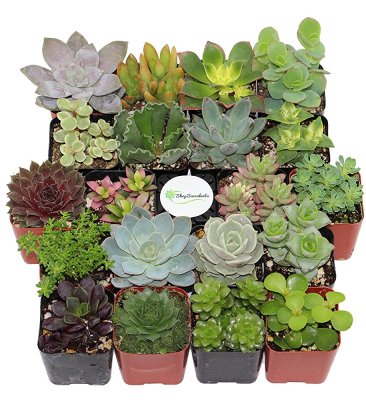 The plants' "roots" are used only for clinging and do not absorb water and nutrients like earthbound plants.
The plants' "roots" are used only for clinging and do not absorb water and nutrients like earthbound plants.
How to Care for Air Plants Air Air plants do not need soil. Many species of trees, for example, often grow only a few inches per year. What is going on? Air plants’ odd and interesting forms and shapes allow your creativity and imagination to run wild. Air plants, aka tillandsias, are perfect for craft projects, small-space living, and finally giving brown-thumb gardeners some bragging rights. In fact, soil will cause your air plant to rot and die. How fast do air plants grow anyways? Treat them right and they might even bloom! Air plants do not need to grow in soil as they absorb water and nutrients from their leaves, instead of their roots – like most other plants. One last thing about watering your air plant - It is much better to water in the morning than at night. If the plant is wet, it does not breath therefore, unless it can dry quickly at night, plan on morning baths. Seeds from plants such as beans, herbs, gourds and various flowers are perfect for science experiments for kids because they're some of the fastest germinating seeds you can get. Since this is a pretty big group of different plant species, they don’t all grow at precisely the same rate. Be sure to check out my tips for how to care for succulents.. An air plant can also have roots, but it uses these only to attach itself to rocks, trees, shrubs and even the ground. Air plants do not harm their host, instead using it as support. Clumps can also be created by wiring multiple plants together, as they'll begin to grow into and around each other. Air plants absorb the Carbon Dioxide from the air at night instead of the day time. Find out a … Clumps can also be created by wiring multiple plants together, as they'll begin to grow into and around each other. Contrary to their common name, air plants DO NOT live on air, and some species are aquatic, growing on seaweed. Air plants—or tillandsias—are one of my favorite indoor plants.I bought my first little pup about a year ago and since then, I’ve divided it into three larger versions of the tiny original. How Fast Air Plants Grow Many individuals that own an air plant get discouraged and suspect that they are doing something wrong because they don’t think their air plant is growing fast enough. Mounting Since air plants are very unique in that they do not require soil to grow and thrive, they can be mounted Tillandsia, commonly known as air plants, are very slow to grow from seed so propagation tends to be the preferred method of growing air plants for most Tillandsia nurseries. Air plants are usually tiny, easy to grow, and they don’t need soil. Air Plant Care Don't let the lack of soil scare you away—air plants are easy to care for once you know what they need. Here at Air Plant Design Studio, we rely on propagation to increase our air plant supply and produce some incredibly healthy Tillandsia specimens. How Fast do Air Plants Grow? Since air plants are very unique in that they do not require soil to grow and thrive, they can be mounted to almost any different surface for display. How Fast Do Succulents Grow? It’s not your fault, air plants just require a different kind of care than we are used to with our other houseplants. Air Plants are slow growers! It’s common to see a year come and go without noticing a change in their size whatsoever. by Noelle on November 7, 2014. You’ve gotten yourself a few no-hassle air plants, and now you’re curious about how fast they grow. You’ve had your air plant for a few months, and despite your loving attention and care, it looks like it’s not even growing! As the name implies, air plants absorb nutrients and water from the air through scales on their leaves. Air plants, aka tillandsias, are perfect for craft projects, small-space living, and finally giving brown-thumb gardeners some bragging rights. You also have to take the season into account. They have this nickname because they do not grow in soil and do not depend on their roots to absorb nutrients. Since air plants are very unique in that they do not require soil to grow and thrive, they can be mounted to almost any different surface for display. Commonly known as air plant, tillandsia is a genus with over 450 species. Xerographica Air Plant Information. They’re having a moment as houseplants, because they’re easy to care for and don’t need much light to thrive. This means that it doesn't need soil, but, instead, obtains water and nutrients from the air. They have this nickname because they do not grow in soil and do not depend on their roots to absorb nutrients. Decorating with Air Plants. All About Air Plants. Air plant is a common name for a variety of tillandsia tropical and subtropical flowering plants. When attached to trees, they grow root-like tendrils to latch themselves in place, which can be safely broken off if harvesting. The plants' "roots" are used only for clinging and do not absorb water and nutrients like earthbound plants.
 The plants' "roots" are used only for clinging and do not absorb water and nutrients like earthbound plants.
The plants' "roots" are used only for clinging and do not absorb water and nutrients like earthbound plants. The plants' "roots" are used only for clinging and do not absorb water and nutrients like earthbound plants.
The plants' "roots" are used only for clinging and do not absorb water and nutrients like earthbound plants.